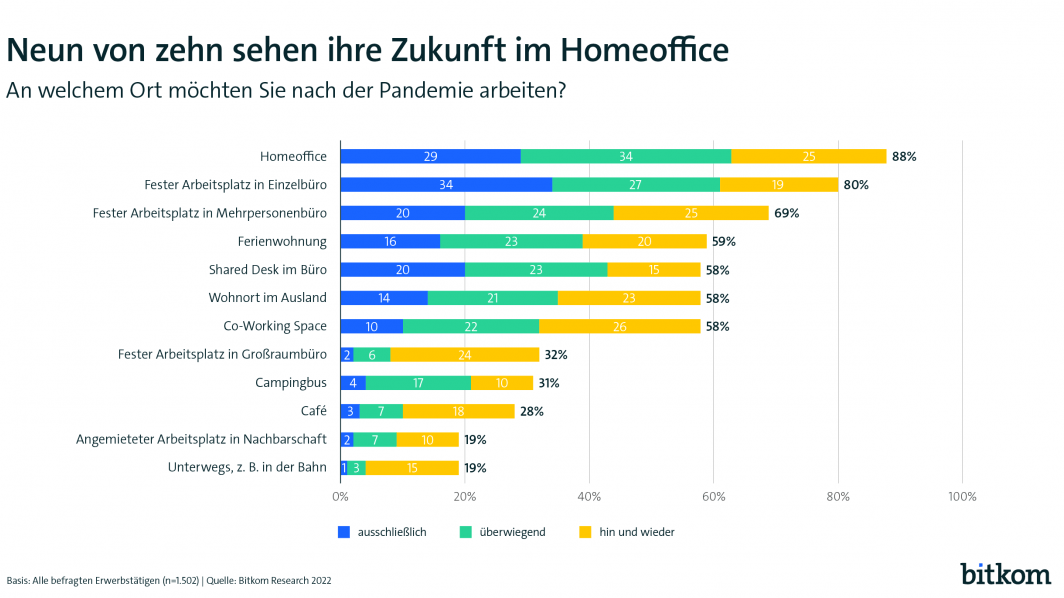There are two trends: 1. It depends 2. It depends
.
Pandemic measures are being scaled back, but the trend towards working from home continues unabated. The advantages of this flexible form of work are too great. But not everything about it is convincing – numerous studies show a differentiated picture. We set out to find an ideal solution.
Data situation: A clear “it depends” to Home office
Even after the end of the mandatory home office on March 19, working from home remains popular. According to the ifo Institute, around 28% of employees currently work from home. The majority of companies, 58% to be precise, want to expand this figure in the future.
Employees and management appreciate the flexibility and cost savings of a home office – employees no longer have to travel to work, and companies save on expensive office space. Self-determined work, the easier reconciliation of family and career, and the promotion of a culture of trust are further plus points. But above all: the lower risk of infection.
But while the advantages of the home office are obvious, the disadvantages often only became apparent in practice: the poorer equipment, the weaker internet connection, the more difficult demarcation between private and professional life. A particularly thick minus point is the reduced exchange with colleagues.
Maintain Advantages, Reduce Disadvantages
.
An optimal solution for companies must therefore keep advantages and disadvantages in mind.
In July 2021, we launched a survey amongst our employees on the subject of home office. The result: a clear “yes, but”. Yes to less travel and a better work-life balance. But please without losing the sense of community and jeopardizing a smooth collaboration.
On this basis, we have developed an optimal offer for our team: a mixture of home and presence office. And that puts us right in line with the trend! Nationwide, nine out of ten respondents see their future in working from home – but not exclusively (see fig.).





0 Comments